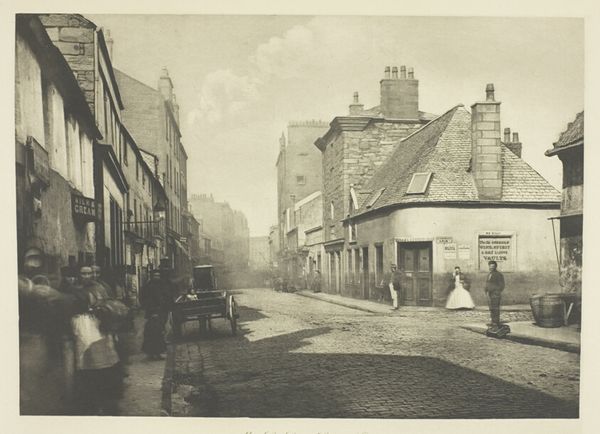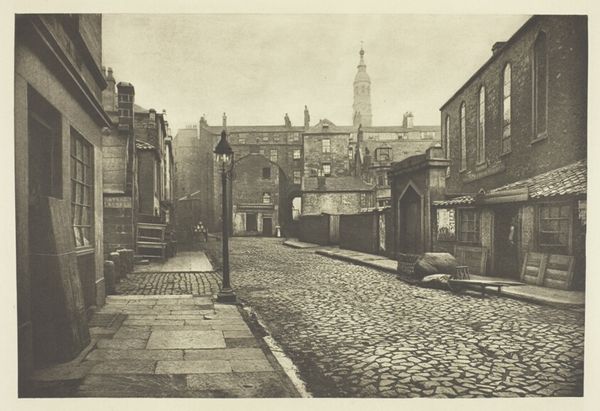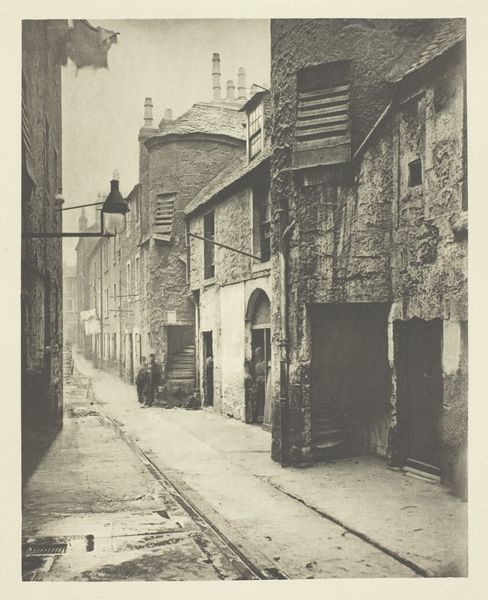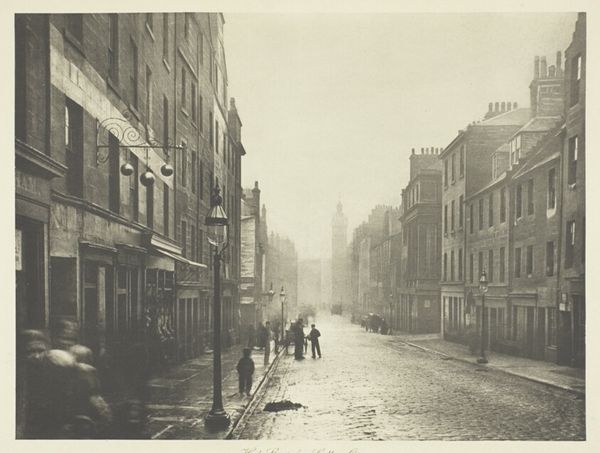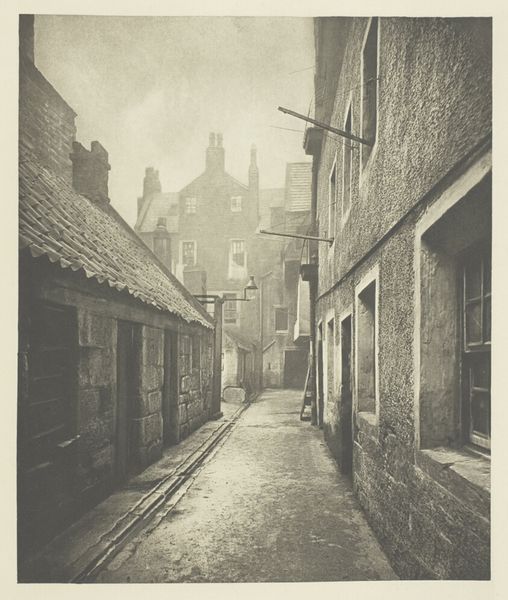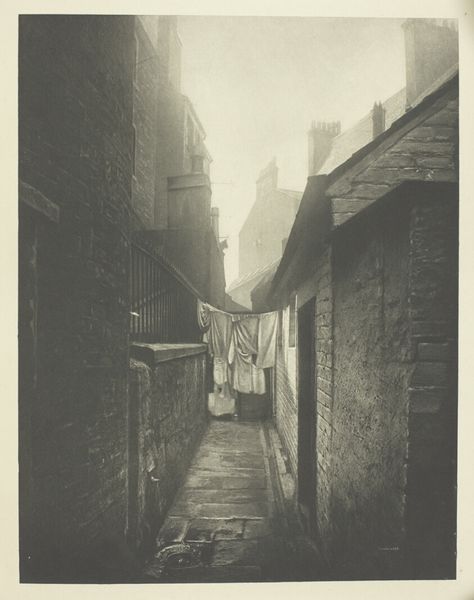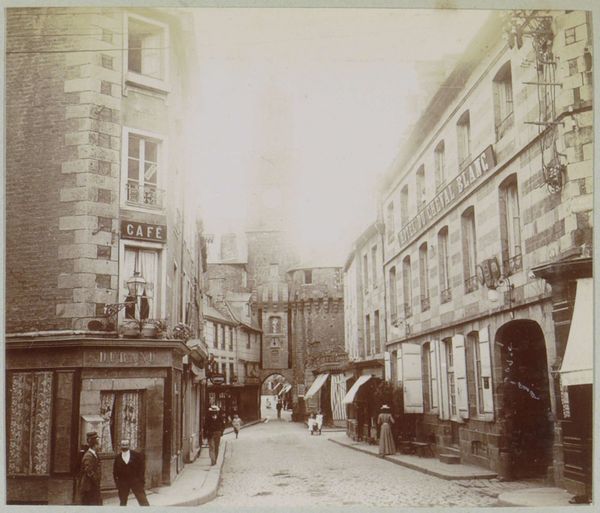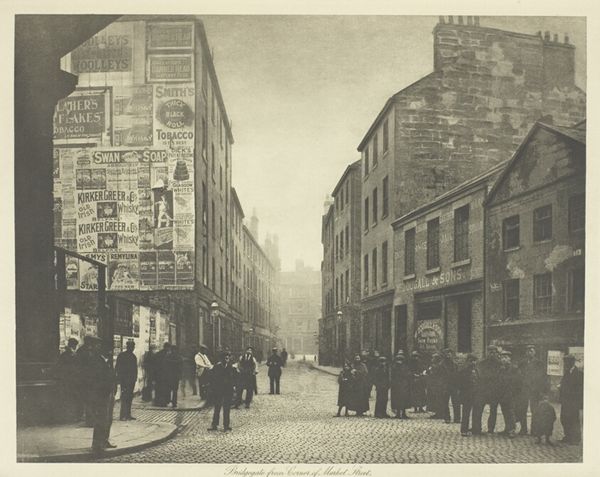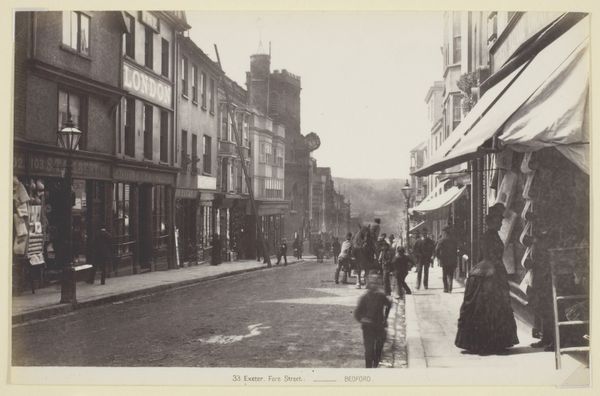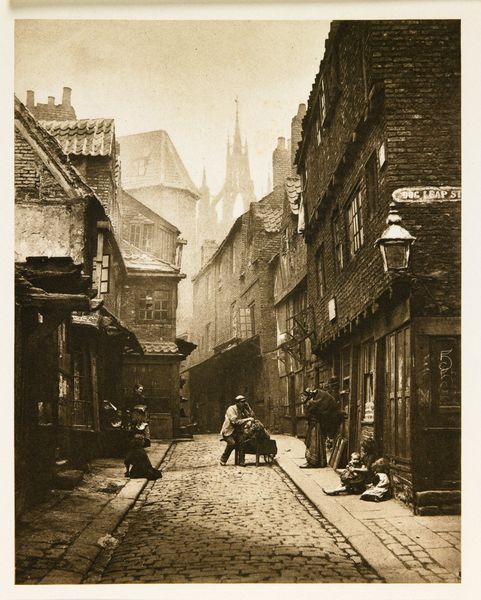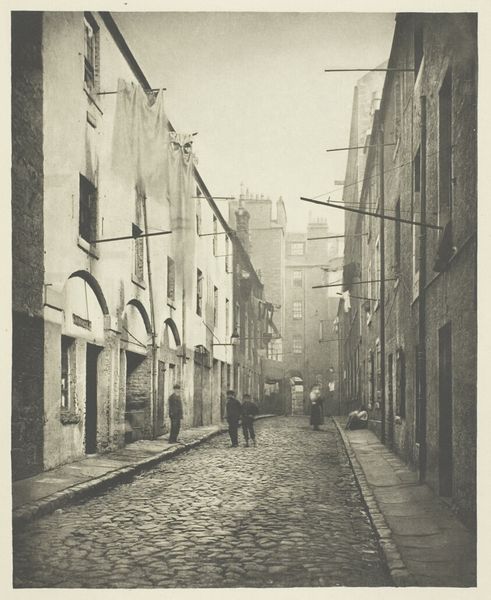
photography, albumen-print
#
landscape
#
archive photography
#
street-photography
#
photography
#
historical photography
#
cityscape
#
albumen-print
#
realism
Dimensions: 18.3 × 23.8 cm (image); 27.8 × 37.8 cm (paper)
Copyright: Public Domain
Editor: So, here we have Thomas Annan's "Main Street, Gorbals, Looking South," an albumen print from 1868, now at the Art Institute of Chicago. It feels…desolate. The buildings look run-down and there are only a couple of figures in the distance. How do you interpret this work? Curator: It's a powerful image, isn't it? For me, Annan's photograph transcends a simple depiction of a street. It becomes a document of social inequality, of Victorian Glasgow’s underbelly. Think about the timing: 1868. The industrial revolution is booming, but who benefits? Consider the 'rag and metal store', the figures seemingly burdened – what does the image communicate about the lives lived within those walls? Editor: I see what you mean. It’s not just a street; it's a record of a particular social reality. But was Annan trying to make a political statement, or just document what he saw? Curator: That’s the crucial question, isn’t it? Can the act of documenting such scenes, of giving visibility to marginalized communities, *be* a political act? He was commissioned to record areas slated for demolition. Is this progress or erasure? The photograph serves as evidence, almost like a forensic record, inviting us to analyze power structures. Editor: That makes me see it differently. The demolition is more than just urban renewal; it’s displacing people and erasing a history. Curator: Exactly. This photo, while seemingly a simple landscape, becomes deeply intertwined with issues of class, urban development, and the very act of seeing. Whose stories are being told, and whose are being actively demolished? Editor: Wow, I hadn't considered it that way. It makes me wonder about the responsibility of the artist when portraying subjects facing marginalization. Curator: Indeed. Photography doesn't just reflect reality; it actively participates in shaping it, constructing narratives, and sometimes, perpetuating inequalities even when attempting to reveal them. Editor: I learned so much looking at just one street! Curator: As did I; it's in the exchange, the questions we ask of art, that new understandings emerge.
Comments
No comments
Be the first to comment and join the conversation on the ultimate creative platform.
